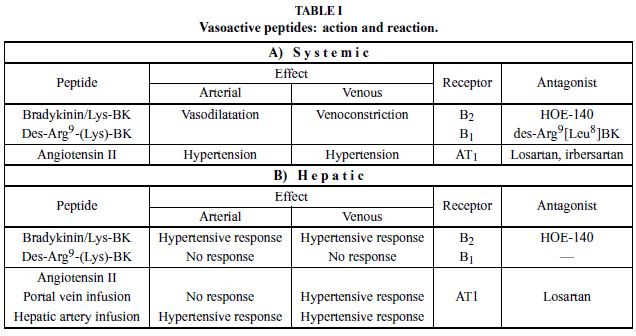Portal hypertension is the most common complication of chronic liver diseases, such as cirrhosis. The increased intrahepatic vascular resistance seen in hepatic disease is due to changes in cellular architecture and active contraction of stellate cells. In this article, we review the historical aspects of the kallikrein-kinin system, the role of bradykinin in the development of disease, and our main findings regarding the role of this nonapeptide in normal and experimentalmodels of hepatic injury using the isolated rat liver perfusion model (mono and bivascular) and isolated liver cells. We demonstrated that: 1) the increase in intrahepatic vascular resistance induced by bradykinin is mediated by B2 receptors, involving sinusoidal endothelial and stellate cells, and is preserved in the presence of inflammation, fibrosis, and cirrhosis; 2) the hepatic arterial hypertensive response to bradykinin is calcium-independent and mediated by eicosanoids; 3) bradykinin does not have vasodilating effect on the pre-constricted perfused rat liver; and, 4) after exertion of its hypertensive effect, bradykinin is degraded by angiotensin converting enzyme. In conclusion, the hypertensive response to BK is mediated by the B2 receptor in normal and pathological situations. The B1 receptor is expressed more strongly in regenerating and cirrhotic livers, and its role is currently under investigation.
bradykinin; hepatic metabolism; portal hypertension; bradykinin receptors



